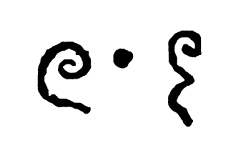Number
(Redirected from Numbers)
Concept of a mathematical object used to count, measure, and label
Number[edit | edit source]
A number is a mathematical object used to count, measure, and label. The original examples are the natural numbers 1, 2, 3, and so forth. Numbers can be represented in various forms, such as numerals, and can be used in arithmetic operations like addition, subtraction, multiplication, and division.
History[edit | edit source]
The concept of number has evolved over time. Early humans used simple tally marks to keep track of quantities. The development of numeral systems allowed for more complex calculations and record-keeping. Ancient civilizations such as the Babylonians, Egyptians, and Romans developed their own numeral systems.
Types of Numbers[edit | edit source]
Numbers can be classified into different types based on their properties and the operations that can be performed on them.
Natural Numbers[edit | edit source]
Natural numbers are the set of positive integers starting from 1. They are used for counting and ordering.
Integers[edit | edit source]
Integers include all whole numbers, both positive and negative, as well as zero. They are used in situations where both positive and negative values are needed.
Rational Numbers[edit | edit source]
Rational numbers are numbers that can be expressed as the quotient of two integers, where the denominator is not zero. They include fractions and whole numbers.
Real Numbers[edit | edit source]
Real numbers include all the numbers on the number line, encompassing both rational and irrational numbers. They are used to measure continuous quantities.
Complex Numbers[edit | edit source]
Complex numbers consist of a real part and an imaginary part. They are used in advanced mathematics and engineering to solve equations that have no real solutions.
Numeral Systems[edit | edit source]
Numeral systems are ways of representing numbers. The most common system in use today is the decimal system, which is based on the number 10. Other systems include the binary system, used in computing, and the Roman numeral system, used in ancient Rome.
Arithmetic Operations[edit | edit source]
Numbers are used in various arithmetic operations:
- Addition - Combining two numbers to get a sum.
- Subtraction - Finding the difference between two numbers.
- Multiplication - Repeated addition of a number.
- Division - Splitting a number into equal parts.
Related Pages[edit | edit source]
Search WikiMD
Ad.Tired of being Overweight? Try W8MD's physician weight loss program.
Semaglutide (Ozempic / Wegovy and Tirzepatide (Mounjaro / Zepbound) available.
Advertise on WikiMD
|
WikiMD's Wellness Encyclopedia |
| Let Food Be Thy Medicine Medicine Thy Food - Hippocrates |
Translate this page: - East Asian
中文,
日本,
한국어,
South Asian
हिन्दी,
தமிழ்,
తెలుగు,
Urdu,
ಕನ್ನಡ,
Southeast Asian
Indonesian,
Vietnamese,
Thai,
မြန်မာဘာသာ,
বাংলা
European
español,
Deutsch,
français,
Greek,
português do Brasil,
polski,
română,
русский,
Nederlands,
norsk,
svenska,
suomi,
Italian
Middle Eastern & African
عربى,
Turkish,
Persian,
Hebrew,
Afrikaans,
isiZulu,
Kiswahili,
Other
Bulgarian,
Hungarian,
Czech,
Swedish,
മലയാളം,
मराठी,
ਪੰਜਾਬੀ,
ગુજરાતી,
Portuguese,
Ukrainian
Medical Disclaimer: WikiMD is not a substitute for professional medical advice. The information on WikiMD is provided as an information resource only, may be incorrect, outdated or misleading, and is not to be used or relied on for any diagnostic or treatment purposes. Please consult your health care provider before making any healthcare decisions or for guidance about a specific medical condition. WikiMD expressly disclaims responsibility, and shall have no liability, for any damages, loss, injury, or liability whatsoever suffered as a result of your reliance on the information contained in this site. By visiting this site you agree to the foregoing terms and conditions, which may from time to time be changed or supplemented by WikiMD. If you do not agree to the foregoing terms and conditions, you should not enter or use this site. See full disclaimer.
Credits:Most images are courtesy of Wikimedia commons, and templates, categories Wikipedia, licensed under CC BY SA or similar.
Contributors: Prab R. Tumpati, MD



